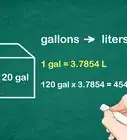This article was co-authored by wikiHow Staff. Our trained team of editors and researchers validate articles for accuracy and comprehensiveness. wikiHow's Content Management Team carefully monitors the work from our editorial staff to ensure that each article is backed by trusted research and meets our high quality standards.
This article has been viewed 41,086 times.
Learn more...
Nanometers and meters are units of measuring length in the SI (metric) system. A nanometer is a very small unit of measure, used to measure things like atoms and molecules.[1] The meter is the standard unit of length in the metric system. There are times when you may know the length of something in nanometers but want to convert it to meters. To do this, you can use a conversion factor fraction. You may also simply move the decimal place if you understand the metric units. Finally, you can use a conversion calculator available online.
Steps
Using a Conversion Factor
-
1Know the conversion factor between nanometers and meters. You can look online or in a textbook to find the relationship between nanometers and meters. The relationship between the two units is:[2]
- 1 meter = 1,000,000,000 nanometers (nm)
-
2Write the conversion factor as a fraction. Recall that any fraction in which the numerator and denominator are equal has an overall value of 1. This is useful, because you can use the conversion fraction to change units without changing the value of the measurement. When you begin with nanometers and want to convert to meters, you will use the following conversion factor:[3]
- This is the fraction to convert from nanometers into meters. If you want to begin with meters and convert to nanometers, you just need to flip the fraction upside down.
Advertisement -
3Set up a conversion equation. To convert from one unit to another, you need to set up a simple multiplication equation. You begin with your initial measurement and multiply it by the conversion factor. The result will be your answer.[4]
- Remember that you can cancel units that appear once in a numerator and once in a denominator. This is the purpose of the conversion fraction. Your original measurement begins with nanometers, and the conversion fraction has nanometers in the denominator. Thus, the units of nanometers will cancel, and what remains will be the answer in meters.
- For this conversion, suppose you have measured a germ that is 2,600 nanometers wide. The conversion equation will be:
-
4Perform the conversion. If your conversion factor is correct, the final step should be a simple multiplication. Finish the conversion as follows:[5]
Counting Decimals
-
1Learn the relative positions of the units. The strength and simplicity of the metric system stem from the fact that the units are based on multiples of 10. Therefore, converting from one unit to another is simply a matter of moving the decimal point the correct number of spaces. To use this shortcut tool, you need to know the exponent measures of the units involved.[6]
- The meter is the basic unit of length measurement in the metric system. Written as a base 10 exponent, .
- The nanometer is one-billionth of a meter. Written as a base 10 exponent, .
-
2Know the LARS mnemonic. For moving decimal places, “LARS” is a handy memory device. It stands for “Left-Add, Right-Subtract.” This tells you what to do with the decimal point if you wish to either add or subtract to change exponents. If you want to convert your measurement from a small exponent to a larger one, you will be adding units to the exponent, and for each one addition to the exponent, you will move the decimal point one space to the left. Moving from a larger unit of measure to a smaller, you will be subtracting exponents, which will involve moving the decimal point to the right.
- For example, consider converting kilometers to meters. A kilometer is meters, but the single meter is . Thus, you want to subtract 3 in the exponent, so you will move the decimal to the right three places ("Left-Add, RIGHT-SUBTRACT"). Therefore, if you begin with a measure of 1.234 km, you would make the following change to meters:
- 1.234 km ............(original unit)
- 12.34 .................(move decimal one space right)
- 123.4..................(move decimal two spaces right)
- 1,234 m..................(move decimal three spaces right)
- For example, consider converting kilometers to meters. A kilometer is meters, but the single meter is . Thus, you want to subtract 3 in the exponent, so you will move the decimal to the right three places ("Left-Add, RIGHT-SUBTRACT"). Therefore, if you begin with a measure of 1.234 km, you would make the following change to meters:
-
3Decide how you want to change the exponent. To convert from nanometers, which are units of 10-9 m, into meters, which are units of 100 m, you are moving from -9 to 0. This requires you to add 9. According to the LARS mnemonic, adding 9 units in the exponent means moving the decimal place 9 spaces to the left (“Left-Add”).
-
4Move the decimal as needed. For this example, suppose you have the measurement of a germ at 2,600 nm. You need to move the decimal point 9 spaces to the left. Since this is a whole number with no decimal point showing, you can insert the decimal at the end of the number and then count the spaces to move it. When you run out of numbers, you will fill in all remaining spaces with zeroes.[7]
- Write 2,600 nm as “2,600. nm” with a decimal point. Then move the decimal as follows:
- 260.0………. (one space left)
- 26.00……….(two spaces left)
- 2.600……….(three spaces left)
- .2600……….(four spaces left)
- .02600………(five spaces left)
- .002600…….(six spaces left)
- .0002600……(seven spaces left)
- .00002600…..(eight spaces left)
- .000002600…..(nine spaces left)
- Write 2,600 nm as “2,600. nm” with a decimal point. Then move the decimal as follows:
Using an Online Conversion Calculator
-
1Search the Internet. Perform a simple Internet search for “convert nanometers to meters.” You should get several results with links to a number of different conversion calculators. Look them over and choose the one that you believe will be easiest for you to use. The results should be the same, no matter which conversion calculator you choose. Select one that is easy for entering data with easy-to-read results.[8]
-
2Enter the number of nanometers that you wish to convert. When you find an online conversion calculator that you like, it should have a box or space for you to enter your initial measurement of nanometers. You do not need to worry about counting decimal places or knowing conversion factors. Just enter your measurement, and your answer should appear.[9]
-
3Perform the conversion. On some conversion calculators, after you enter your initial measurement, you need to press a “convert” button. On others, the result may be automatic.[10]
- For example, at the conversion site www.Metric-conversion.net, as soon as you enter the number of nanometers in the first box, an equivalent number of meters will appear immediately in the second box. Entering the number 2,600 in the first box will cause the value of 0.0000026 m to appear in the second box.
References
- ↑ http://www.nanooze.org/how-big-is-a-nanometer/
- ↑ http://www.nanooze.org/how-big-is-a-nanometer/
- ↑ https://www.inchcalculator.com/convert/nanometer-to-meter/
- ↑ https://www.inchcalculator.com/convert/nanometer-to-meter/
- ↑ http://www.nanooze.org/how-big-is-a-nanometer/
- ↑ https://www.inchcalculator.com/convert/nanometer-to-meter/
- ↑ https://sciencenotes.org/nm-to-m-nanometers-to-meters-conversion/
- ↑ https://www.unitconverters.net/length/nanometer-to-meter.htm
- ↑ https://www.unitconverters.net/length/nanometer-to-meter.htm
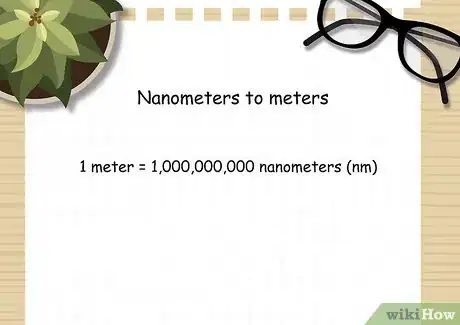
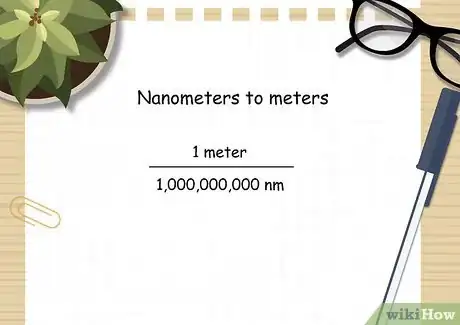

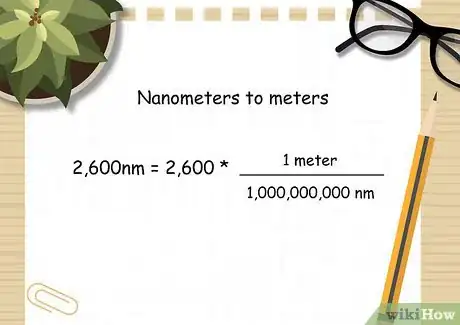

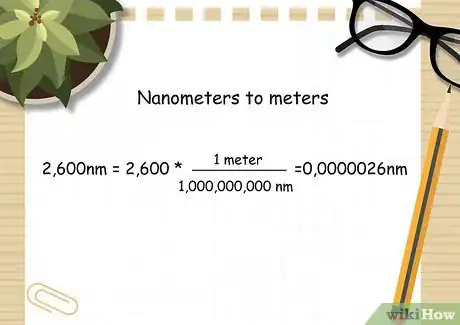

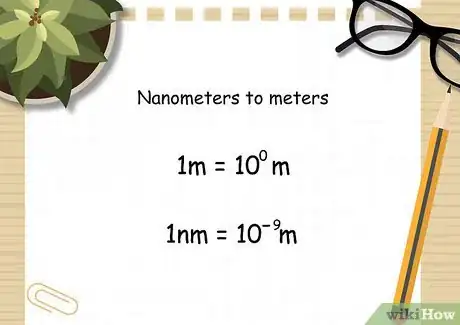


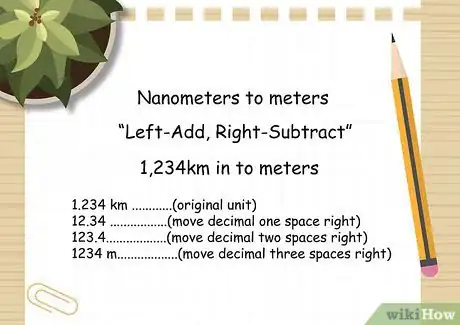


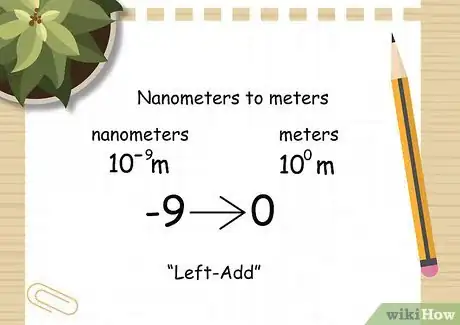
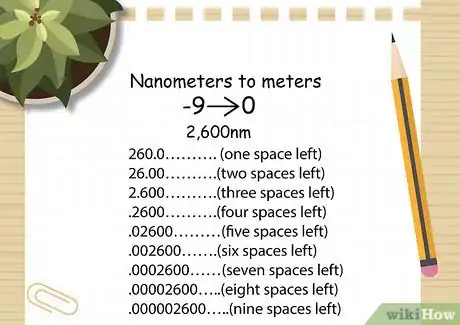
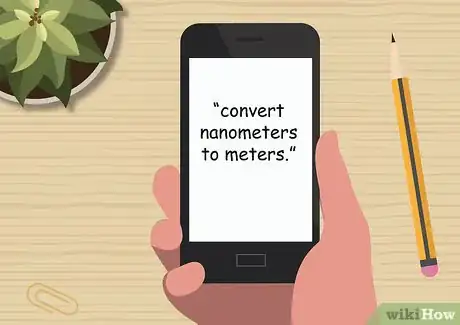
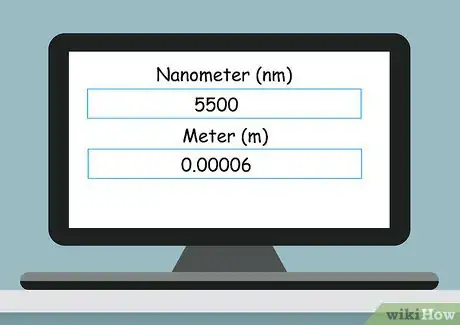
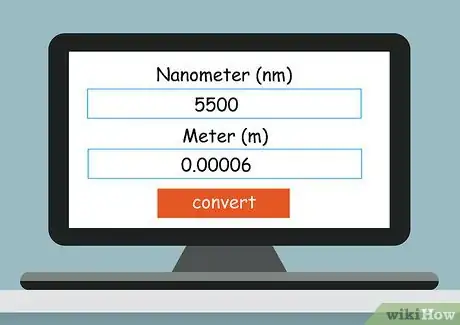
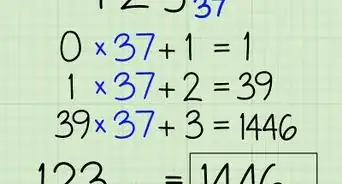
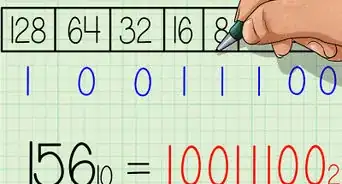
-to-Grams-(g)-Step-8-Version-5.webp)
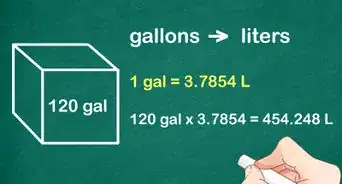
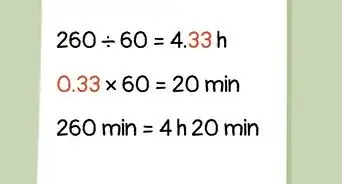
-to-Fahrenheit-(°F)-Step-6-Version-2.webp)
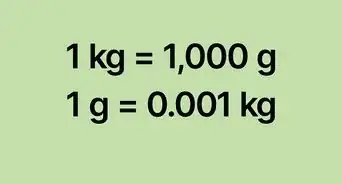
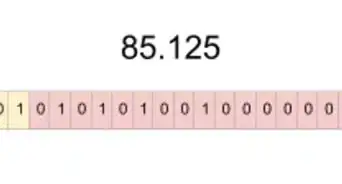
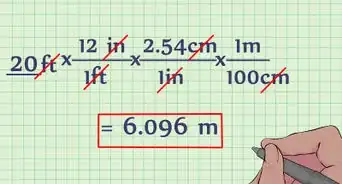
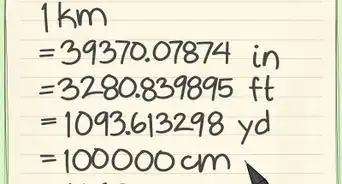
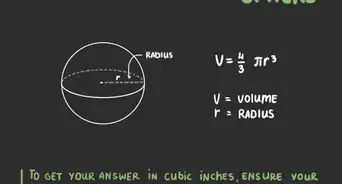
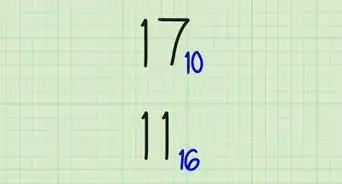
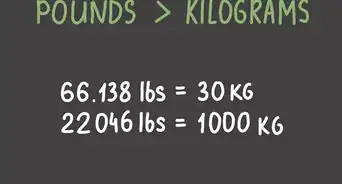
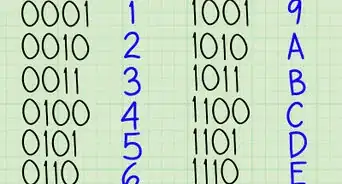







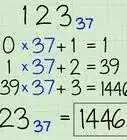
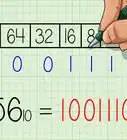
-to-Grams-(g)-Step-8-Version-5.webp)
